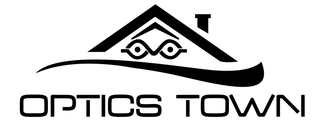What's the Real Profit Margin on Glasses? | Get Your Quote Today
I know you've wondered why glasses cost so much. Let me walk you through the real numbers behind eyewear profit margins and show you how to make smart buying decisions. When you understand the markup structure, you'll see why getting a quote from the right supplier makes all the difference.

Understanding Profit Margins on Glasses
The average profit margin for an optical store is typically between 20% and 30%. But here's what you need to know: this net profit margin tells only part of the story. Typical profit margins in the eyewear industry range between 40% and 60% when looking at gross margins, which shows the difference between what retailers pay and what you pay.
The median profit margin for retail optical is about 61 percent; high-performing margins range from 66-75 percent. These numbers reveal how optical businesses balance their costs with pricing strategies.
Markup Percentages: The Real Numbers
When I examine eyewear pricing, the markup percentages might surprise you. The typical markup percentage for eyewear ranges from 200% to 300% to ensure a healthy profit margin. The average markup on eyeglass frames is approximately 250 percent.
Here's a breakdown of typical costs:
| Item | Wholesale Cost | Retail Price | Markup |
|---|---|---|---|
| Basic Frames | $30-40 | $100-150 | 200-250% |
| Designer Frames | $60-80 | $200-400 | 250-400% |
| Lenses (Basic) | $20-30 | $80-120 | 200-300% |
| Premium Coatings | $15-25 | $50-150 | 200-500% |
Lens coatings and add-ons achieve 75-85% gross margins and significantly boost per-transaction profitability. Anti-reflective coatings, blue light filters, and progressive lenses cost $15-$25 to add but sell for $50-$150.
What Affects Eyewear Profit Margins?
Optical stores typically generate 65% of revenue from retail eyewear and 35% from services, but services contribute 45-50% of total gross profit due to higher margins. Retail products including prescription glasses, contact lenses, sunglasses, and accessories drive the majority of revenue volume.
The location, brand reputation, and service quality all play roles in pricing. Optical stores typically achieve net profit margins between 5-15%, with well-managed suburban locations generating $15,000-$25,000 monthly revenue and $2,000-$4,000 monthly profit. The business model combines high-margin eyewear sales (60-75% gross margin) with valuable service revenue from eye exams and vision tests.
How to Get Better Value on Glasses
Now that you understand the profit margins, let me help you get the best value. I recommend requesting quotes from multiple suppliers to compare pricing. When you place an order with a transparent provider, you'll see exactly where your money goes.
Ready to get competitive pricing on quality eyewear? I invite you to request a quote Optics Town sunglasses wholesaler today. You'll receive personalized pricing based on your specific needs, with no hidden markups or surprise fees. Let me help you find the perfect balance between quality and affordability.
Frequently Asked Questions
What is the typical profit margin on prescription glasses?
The net profit margin ranges from 20-30% for optical stores, while gross profit margins typically sit between 40-60%. High-performing optical retailers achieve gross margins of 66-75%.
Why are glasses so expensive if the markup is so high?
The markup covers more than just the frames and lenses. Optical stores must pay for rent, staff salaries, equipment, insurance, and other operational costs. The markup also accounts for personalized fitting services, eye exams, and warranty coverage.
How much do eyeglass frames actually cost to make?
Basic frames typically cost between $4-$30 to produce, while designer frames may cost $60-$80 at wholesale. However, the retail price includes much more than manufacturing costs—it covers distribution, retail operations, and services.
Are online glasses cheaper because of lower profit margins?
Online retailers often have lower overhead costs (no physical stores, less staff), which allows them to offer lower prices while maintaining similar profit margins. They may mark up glasses 100-200% instead of the traditional 200-300%.
What's the difference between markup and profit margin on glasses?
Markup is the percentage added to the wholesale cost (e.g., 250% markup means a $30 frame sells for $105). Profit margin is what's left after all expenses are paid—typically 20-30% net margin for optical stores after covering rent, salaries, and other costs.

